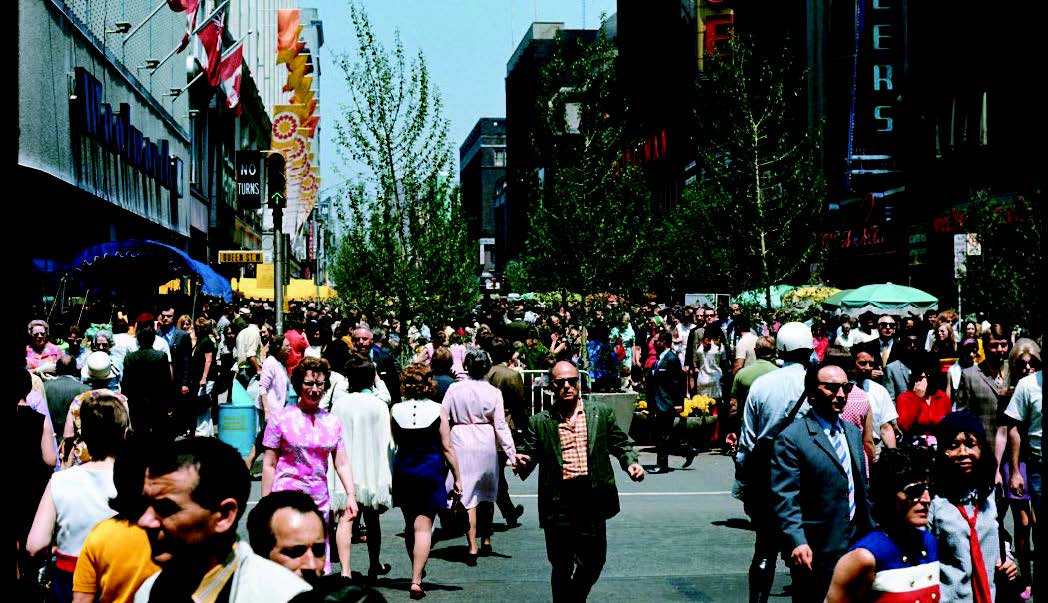By Bruce Bell, History Columnist
–
The first Monday in August is known in our city as Simoce Day, commemorating Lieutenant Governor John Graves Simcoe’s arrival and the creation of the Town of York (now Toronto).
This year it falls on August 1, proclaimed last year as Emancipation Day across Canada to celebrate the end of slavery in the British Empire on August 1, 1834. But Simcoe and Upper Canada legislators had passed an act in 1793 to limit slavery.
One quirk of my life, considering my love of Toronto’s history, is that I arrived in Toronto from Sudbury aged 17 on Simcoe Day in 1972.
In the summer a few weeks prior to my arrival, I was taking phone reservations in an isolated fishing lodge in Killarney, on the north shore of Georgian Bay. Talking to a gentleman from Toronto about a booking for him and his wife, somehow I got to tell him how much I hated being stuck there – beautiful as it was – and that I wanted to move to Toronto and start a life in showbiz.
The gentleman said a movie was being cast in the office across the hall from his, at 22 Front Street West, and that if I really wanted to go now was the time.
As the big boss of the lodge was monitoring my phone calls, I was immediately fired – so without missing a beat I headed south to Toronto to seek fame and fortune.
As instructed by the gentleman, I went directly to 22 Front Street and met with casting director Karen Hazzard. From either destiny or her seeing desperation in my face, I got a week’s work on one of the first big-budget Hollywood movies to be shot in Toronto: Class of ’44, a sequel to the blockbuster The Summer of ’42.
In the hot and bustling Toronto summer of 1972, I was sharing a $90-a-month bachelor apartment near Bloor and Yonge.
Toronto then was starting to distance itself from its stuffy Victorian past. Parts of Yonge Street were (temporarily) transformed into a pedestrian mall, and the King Edward Hotel finally allowed women to enter its front doors unaccompanied by a male.
There was still construction hoarding around Commerce Court at King and Bay, the former Toronto Star building – an art deco masterpiece – still stood on King Street West, and the red non-air-conditioned subway cars produced a musty smell when they headed into tunnels.
On my first day in Toronto I went to a small lunch counter on Yonge Street and struck up an energetic conversation with a lady, telling her I had just arrived in the city with hopes of making a career in show business.
As it turned out the lady was the great Canadian actress Jackie Burroughs (best known as Hetty King in the 1990s series Road to Avonlea), who by 1972 was already a major stage star though unbeknownst to me.
Over the years before her untimely death in 2010, I often ran into Jackie. Although we were never more than passing acquaintances, I always reminded her of that lunch – and she always said she remembered it too.
In 1972 Yorkville was in its final throws of its 1960s hippy haven days. The so-called Mink Mile along Bloor Street was in the planning stages, and the chic Holt Renfrew store was then still a Woolworth department store.
During that first summer downtown, Toronto had three Woolworth stores and two Kresge’s, both known for discount prices and lunch counters. The Kresge’s on the southeast corner of Yonge and Carlton had one of the most fantastic art deco lunch counters in North America.
Although loving Toronto’s multiculturalism, celebrated British writer Jan Morris famously said in one of her travel essays that the only building she liked in our city on an early 1970s visit was that Kresge’s store at Yonge and Carlton. Sadly, it was demolished in the mid-1980s to make way for a condo.
Also gone from that time are the sleek art deco University Cinema on Bloor Street (only the façade remains), the magnificent Carlton Cinema near Yonge, Eaton’s Queen Street store, and the Murray’s restaurant chain, favourite spots for afternoon tea and apple dumplings.
Surprisingly, my first apartment at 50 Gloucester Street is still standing, a small miracle considering Toronto’s enthusiasm for condo building.
In 1972 Toronto was embarking upon its Golden Age. Old guard Mayor William Dennison was about to leave office, and upstart go-getter David Crombie was about to emerge. Bent on shedding its bland image, Toronto created one of the world’s great cities, which I have called home for exactly 50 years.
I remained friends with
Karen Hazzard, who gave me my first break all those years ago, until her death a few years back. To this day, every time I walk by 22 Front Street West I am transported back 50 years to when I first opened that door.
The mysterious gentleman on the phone back at the lodge whose office was across the hall from Karen’s was Gerhard Kennedy, business leader, filmmaker and then husband of broadcaster (later Senator) Betty Kennedy.
I’m grateful I got to thank Gerhard in person for his advice before his death in 1975. I’ve often wondered what would have happened if he hadn’t called that lodge in the summer of 1972.




